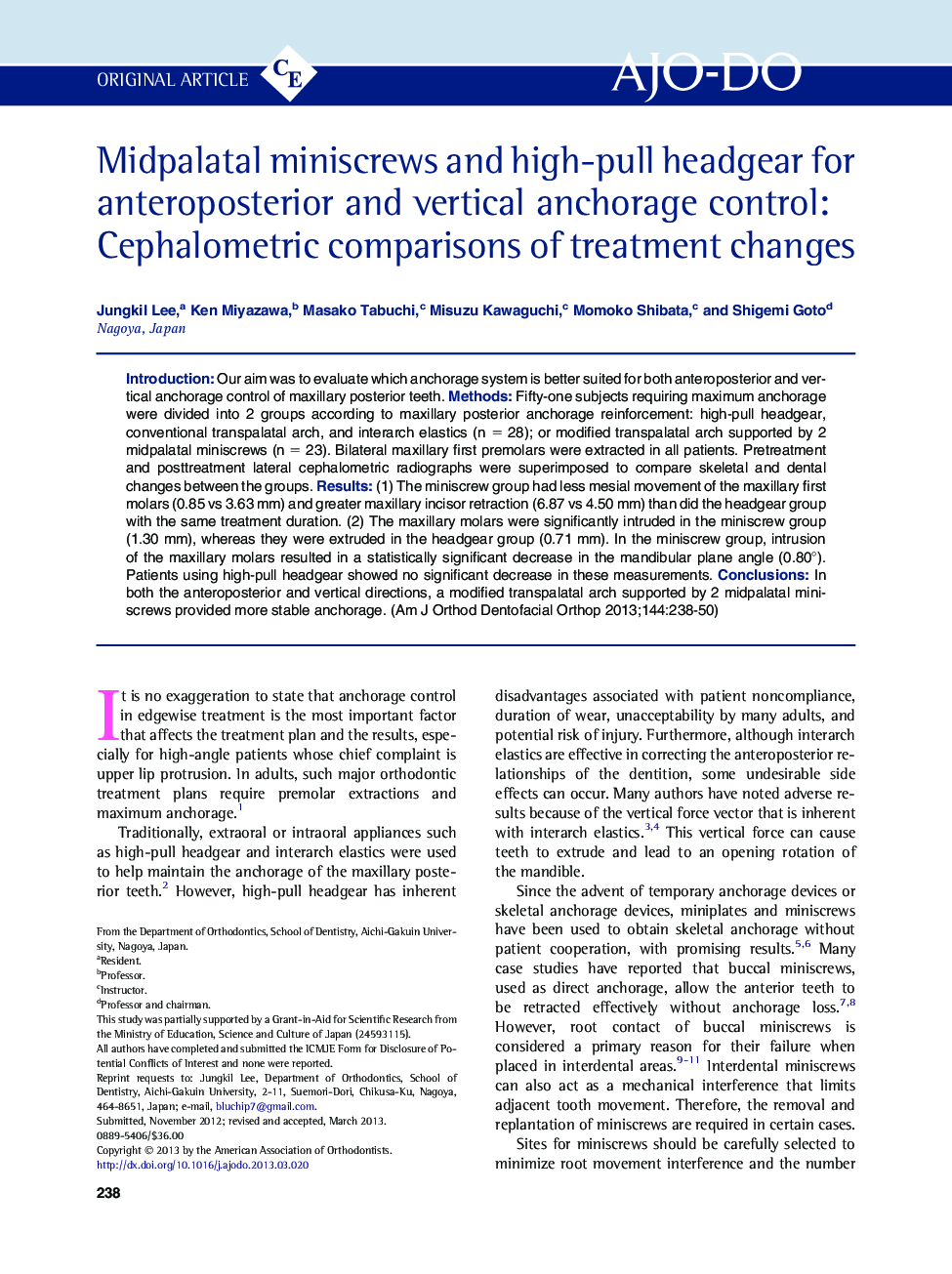| Article ID | Journal | Published Year | Pages | File Type |
|---|---|---|---|---|
| 3116048 | American Journal of Orthodontics and Dentofacial Orthopedics | 2013 | 13 Pages |
IntroductionOur aim was to evaluate which anchorage system is better suited for both anteroposterior and vertical anchorage control of maxillary posterior teeth.MethodsFifty-one subjects requiring maximum anchorage were divided into 2 groups according to maxillary posterior anchorage reinforcement: high-pull headgear, conventional transpalatal arch, and interarch elastics (n = 28); or modified transpalatal arch supported by 2 midpalatal miniscrews (n = 23). Bilateral maxillary first premolars were extracted in all patients. Pretreatment and posttreatment lateral cephalometric radiographs were superimposed to compare skeletal and dental changes between the groups.Results(1) The miniscrew group had less mesial movement of the maxillary first molars (0.85 vs 3.63 mm) and greater maxillary incisor retraction (6.87 vs 4.50 mm) than did the headgear group with the same treatment duration. (2) The maxillary molars were significantly intruded in the miniscrew group (1.30 mm), whereas they were extruded in the headgear group (0.71 mm). In the miniscrew group, intrusion of the maxillary molars resulted in a statistically significant decrease in the mandibular plane angle (0.80°). Patients using high-pull headgear showed no significant decrease in these measurements.ConclusionsIn both the anteroposterior and vertical directions, a modified transpalatal arch supported by 2 midpalatal miniscrews provided more stable anchorage.
